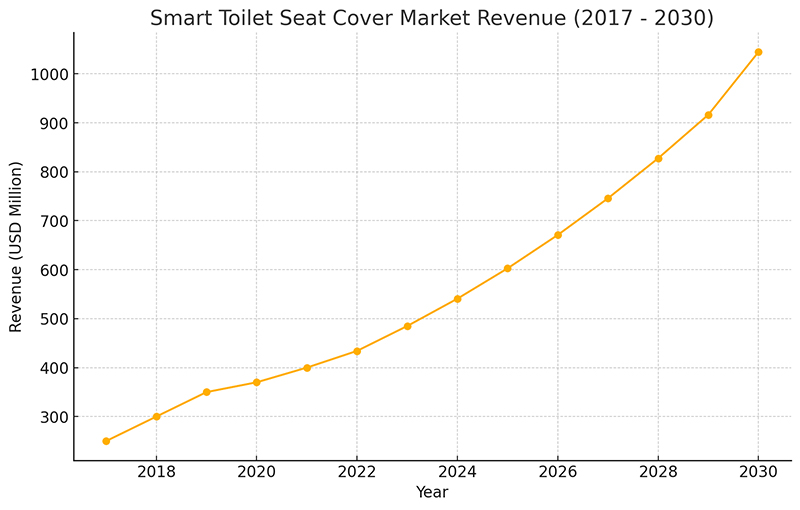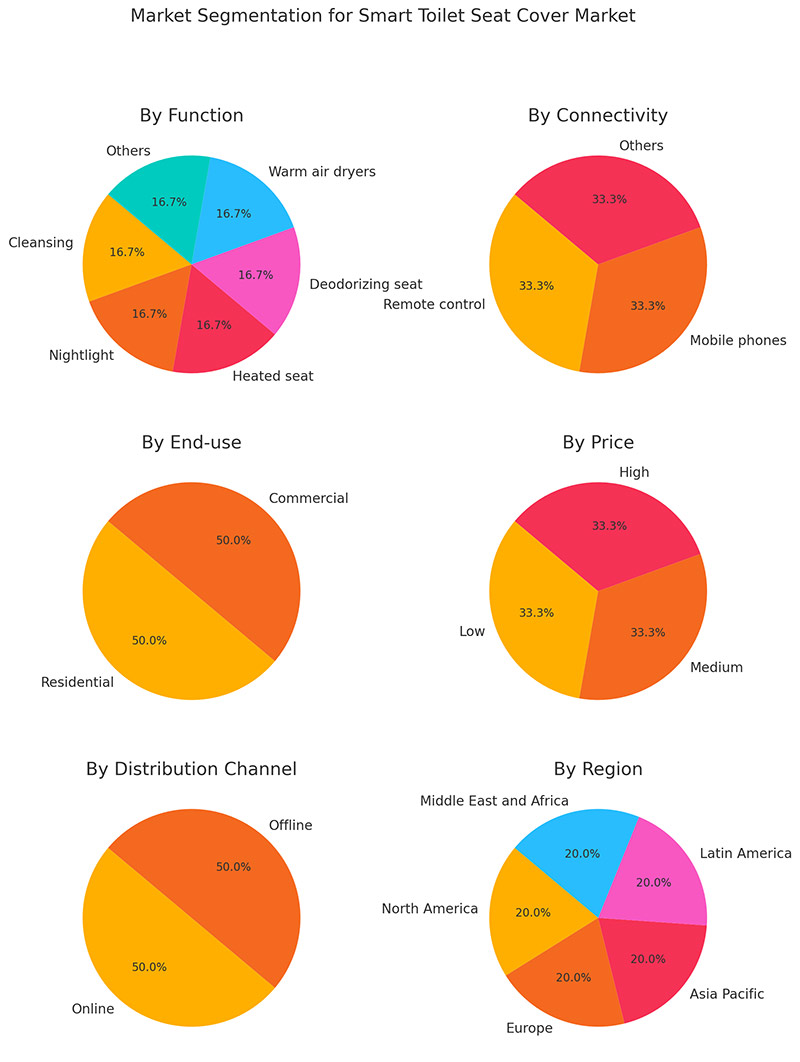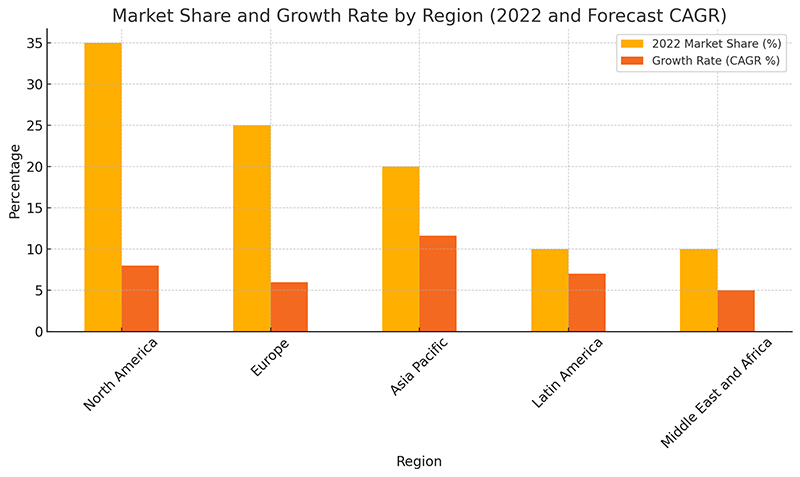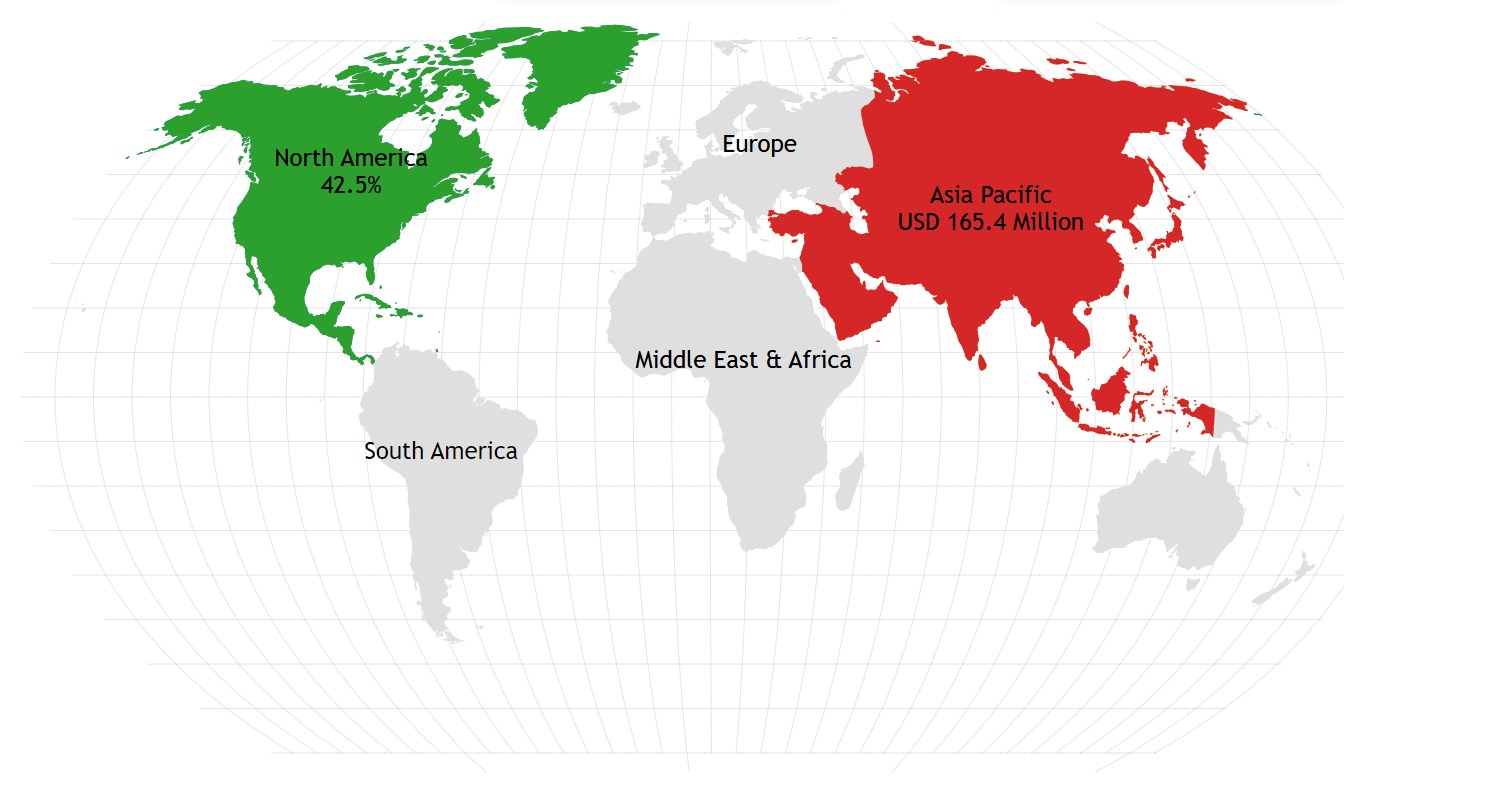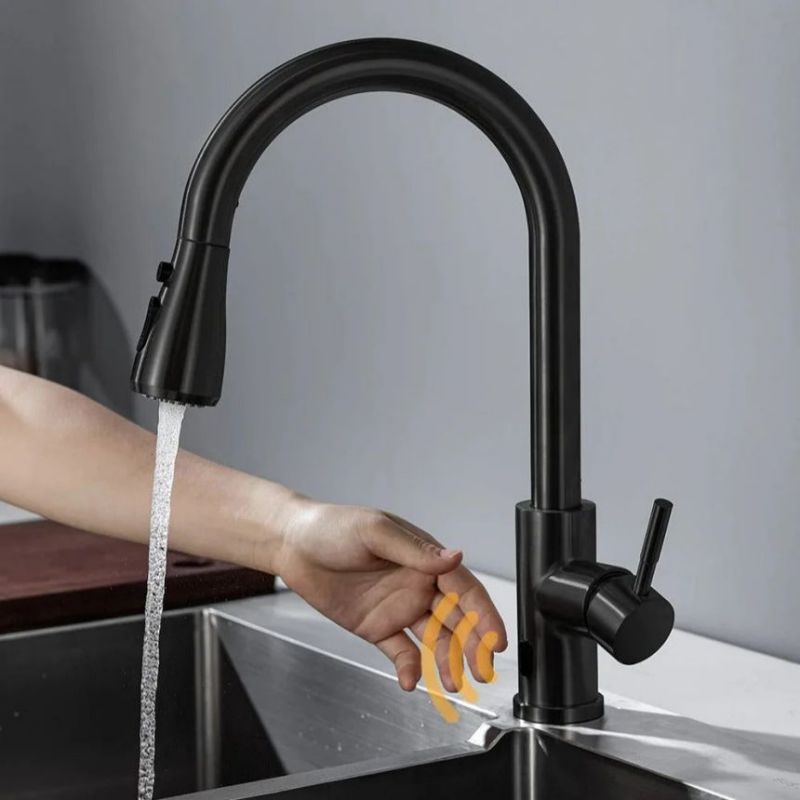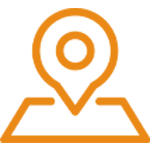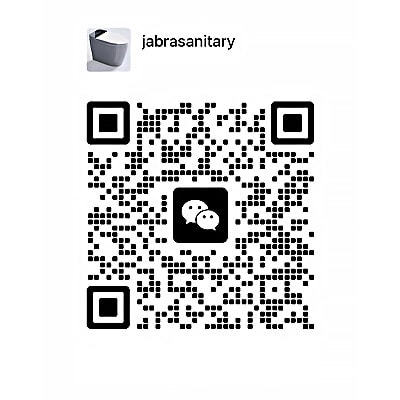 English
English
Jabra Sanitary is a sanitaryware supplier offering toilets, sinks, faucets, bathtubs, etc., at competitive prices. If you're a distributor, wholesaler, or project contractor, get a quote today!
 $23.9 Limited-time Offer
$23.9 Limited-time Offer Consignment Policy
Consignment Policy 20 Years of Experience
20 Years of Experience
The global smart toilet seat cover market has evolved rapidly with the growing adoption of smart home technology.
As bathrooms increasingly become a focal point for innovation, products like the smart toilet seat cover, which features everything from automatic cleaning to heating and air-drying, are in high demand.
This blog provides a deep dive into the industry, exploring its growth trajectory, segmentation, key players, and future potential.
Table of Contents
Market Overview and Size
Key Market Segments
Regional Insights
Competitive Landscape
Market Opportunities and Challenges
Future Trends and Innovations
Consumer Insights and Preferences
Conclusion
Market Overview and Size
In 2022, the market was valued at USD 434.12 million and is projected to reach USD 1.04 billion by 2030, growing at a CAGR of 11.6%.
The global market for smart toilet seat covers has expanded quickly as consumer interest in hygiene and smart home integration grows. Key drivers include increasing disposable incomes, social campaigns, government water conservation initiatives and a preference for eco-friendly, high-tech solutions in residential and commercial sectors.
Demand is anticipated to grow substantially in regions experiencing heightened commercial construction and economic expansion, including South America and the Asia-Pacific.
However, the high cost of smart toilets, along with the enduring popularity of traditional models, continues to pose potential barriers to market growth.
Revenue Growth Over Time
As illustrated in the chart, the market revenue has increased steadily since 2017, reflecting robust growth, with a projected continued upward trend through 2030.
Market Revenue Over Time (2017-2030)
Key Market Segments
The segmentation of the smart toilet seat cover market helps explain its versatility and wide appeal across different consumer demographics and regions.
Market Segmentation: Visual Overview
These pie charts show segmentation across function, connectivity, end-use, pricing, distribution channels, and regions, highlighting the market's diverse components including function, connectivity, end-use, price, distribution channel, and region.
Regional Market Share and Growth Rate
This bar chart presents each region's market share in 2022 alongside its projected CAGR, indicating North America's current dominance and Asia-Pacific's rapid growth trajectory.
Detailed Market Segmentation Chart
The following chart further illustrates the breadth of the market's segmentation, from features and regions to end-use sectors and key brands involved.
| Parameter | Details |
|---|---|
| By Function | Cleansing, Nightlight, Heated Seat, Deodorizing Seat, Warm Air Dryers, Others |
| By Connectivity | Remote Control, Mobile Phones, Others |
| By End-Use | Residential, Commercial |
| By Price | Low, Medium, High |
| By Distribution Channel | Online, Offline |
| By Region | North America, Europe, Asia-Pacific, Latin America, Middle East, and Africa |
| Regions & Countries Covered | North America (U.S., Canada, Mexico), Europe (U.K., France, Germany, Italy, Spain, Rest of Europe), Asia-Pacific (China, Japan, India, South Korea, South East Asia, Rest of Asia-Pacific), Latin America (Brazil, Argentina, Rest of Latin America), Middle East & Africa (GCC Countries, South Africa, Rest of Middle East & Africa) |
| Companies Covered | Arrow Electronics Inc., Bio Bidet USA, Brondell Inc., Duravit AG, Jamoo Kitchen and Bath Co., Kohler Co., Lotus Hygiene Systems Inc., Panasonic Corporation, Toshiba Electronic Devices & Storage Corporation, Toto Ltd. |
| Report Coverage | Market growth drivers, restraints, opportunities, Porter's Five Forces analysis, PEST analysis, value chain analysis, regulatory landscape, technology landscape, patent analysis, market attractiveness analysis by segments, North America company market share analysis, and COVID-19 impact analysis |
| Pricing and Purchase Options | Customized purchase options to meet research needs |
Regional Insights
North America: A Market Leader
In 2022, North America held the largest market share due to high disposable income, luxury consumption trends, and the popularity of smart homes. Consumers in the region are drawn to smart toilet seat covers for their added comfort, convenience, and hygiene.
Asia-Pacific: Fastest-Growing Region
The Asia-Pacific region is projected to grow at the highest CAGR of 11.6% during the forecast period, with demand fueled by rising urbanization and economic growth in countries like China, Japan, and South Korea.
- The residential segment is projected to hold the largest market share, fueled by growing demand for smart homes and rising awareness around energy conservation.
- Offline Distribution Growth: Physical retail stores remain popular due to in-store demonstrations, promotional discounts, and installation services, boosting growth within offline channels.
- North America is expected to lead the market, driven by trends in home automation, higher disposable incomes, and advanced features like hot air drying and deodorizing.
- The Asia-Pacific region is the fastest-growing market, supported by increasing awareness of smart products, benefits in energy and water conservation, and broader accessibility throughout the region.
Competitive Landscape
Major toilet companies in the market include Jabra Sanitary ltd., Arrow Electronics Inc., Bio Bidet USA, Kohler, Panasonic, and Toto Ltd.
These players emphasize innovation, launching products with advanced connectivity and eco-friendly features, often integrated with smart home ecosystems. Competitive dynamics in the market are shaped by technology development and the presence of well-established brands with loyal consumer bases.
Market Opportunities and Challenges
Opportunities
Residential Market Growth in Emerging Economies: Demand is increasing in emerging markets where rising incomes and urbanization encourage the adoption of smart homes.
Increased Commercial Adoption: As hotels and office spaces adopt smart technologies, demand for smart toilet seats with features like hygiene sensors and remote control is expanding.
Eco-Friendly Designs: The growing preference for products that conserve water and energy has led to innovations that meet environmental needs.
Challenges
High Initial Costs: Smart toilet seats often cost significantly more than traditional models, limiting widespread consumer adoption.
Traditional Preferences: Many consumers still prefer conventional toilet seats, which lack the additional costs and installation requirements of smart versions.
Economic and Supply Chain Issues: Economic fluctuations and supply chain disruptions can affect production and distribution.
Future Trends and Innovations
The market for smart toilet seats is expected to see significant advancements, with further integration into smart home systems and a focus on sustainability and health monitoring.
Future designs may include features like biometric sensors to track health indicators, increasing these devices' utility beyond hygiene.
Consumer Insights and Preferences
Smart toilet seats appeal to consumers for their hygiene, comfort, and convenience. Residential users favor heated seats and deodorizing features, while commercial users prioritize hands-free operation and energy efficiency.
Offline channels remain important for these products, as in-store demonstrations provide a hands-on experience, though online sales continue to rise.
Conclusion
In conclusion, the smart toilet seat cover market is expanding rapidly, driven by global consumer demand for comfort, hygiene, and sustainable solutions.
With North America leading and Asia-Pacific set for the fastest growth, companies are well-positioned to meet these trends through innovative designs. By staying on top of consumer needs and technological advancements, the smart toilet seat cover industry is expected to see continuous growth and wider adoption in the coming years.









